Canada’s Columbia Wetlands: Wildlife & Wilderness
Columbia River Basin
|
NEW ESRI StoryMaps: What's On Our Shelves & NWNL Song Library & No Water No Life ESRI |
Columbia River Basin
John Bergenske
Wildsight Executive Director
Alison M. Jones
NWNL Director & Photographer
Robin MacEwan
NWNL Advisor on Natural Resource Management
CANADIAN COLUMBIA RIVER ISSUES
EAST KOOTENAY STEWARDSHIP
TOURISM IMPACTS
US v CANADIAN ENVIRONMENTAL LAWS
CLIMATE CHANGE IMPACTS
All images © Alison M Jones. All rights reserved.
Now Wildlife’s strategic advisor, John Bergenske has worked for 20 years to build the Purcell Wilderness Conservancy and protect East Kootenay’s wildlife, its habitats and corridors, and forests against industrial pollution and habitat destruction by mining and development.
The goal of Wildsight is to inspire protection of Canadian and Rocky Mountain environments for future generations via wilderness protection for its wildlife, clean air and water in its mountains and lakes. Its outreach of sustainability connects and coordinates industry, science, education and government at local, regional and global levels.
James has long supported a health Mara River and warned of impacts of deforestation at its source. In 2009 he forecast, “If the Mara River dries up, we’ll lose the lifeblood of the Mara-Serengeti Ecosystems and its great wildebeest migration.”
Worried that without healthy wildlife ecosystems 2 million Kenyans could lose tourism income, he hails education as key to a sustainable Kenya. Worried over the drought-threatened livelihoods of pastoralists, he notes “Maasai setting up community conservation areas will find wildlife and tourism more viable than cattle.”
Update: Sept. 2023: A “reforestation marathon” in the Mau Forest will help fund Kenya’s goal to plant 1.5 billion trees per year to increase its tree cover 30% by 2032.
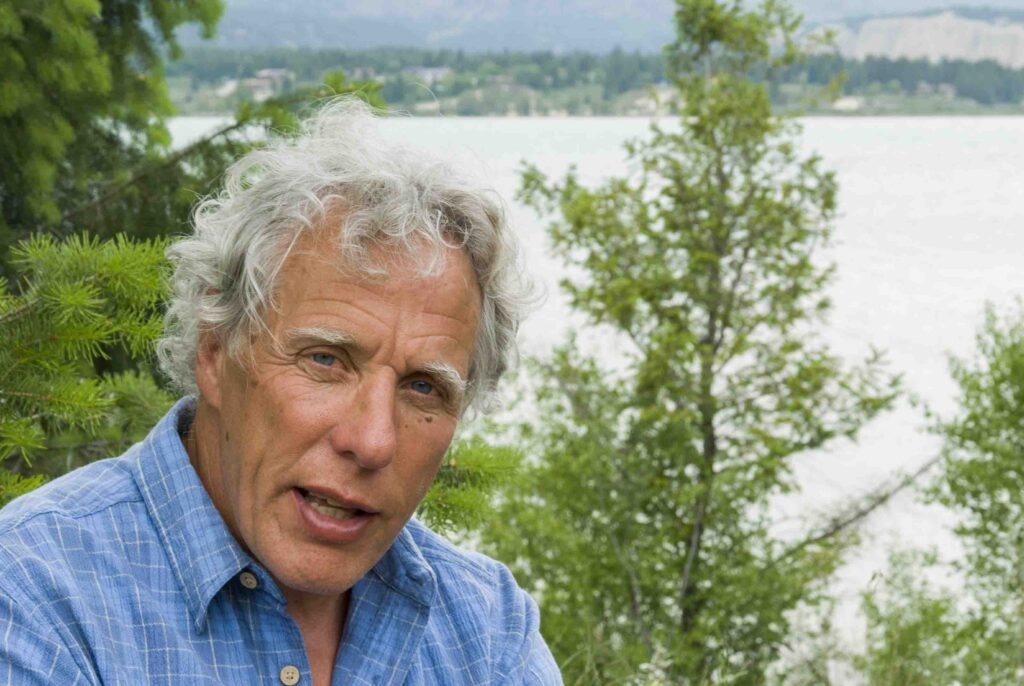
NWNL John, what issues are facing in these Canadian headwaters of the Columbia River as it runs from here cutting through the US states of Washington and Oregon and on to its Pacific Ocean finale?
BERGENSKE To begin, I’m worried about pollution of this lake! For a long time, there were all these cabins – usually just 2 rooms – that you see as our boat follows the shores of Lake Windermere. Now these little cabins are being bulldozed and replaced by really big houses. But the bigger new homes keep the same septic systems, which is being allowed for some reason.
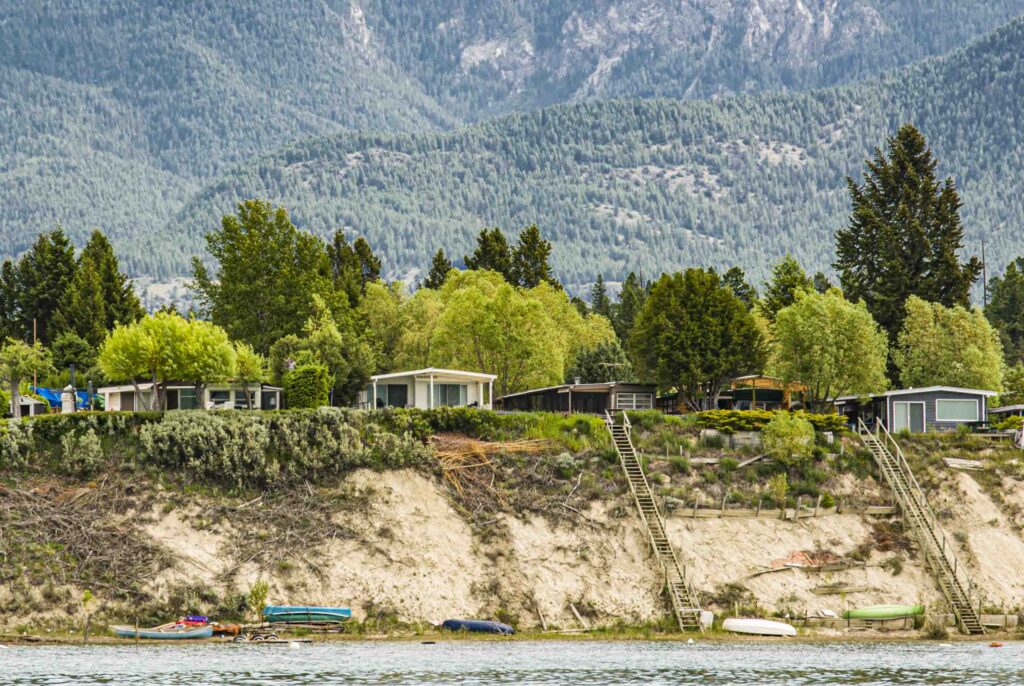
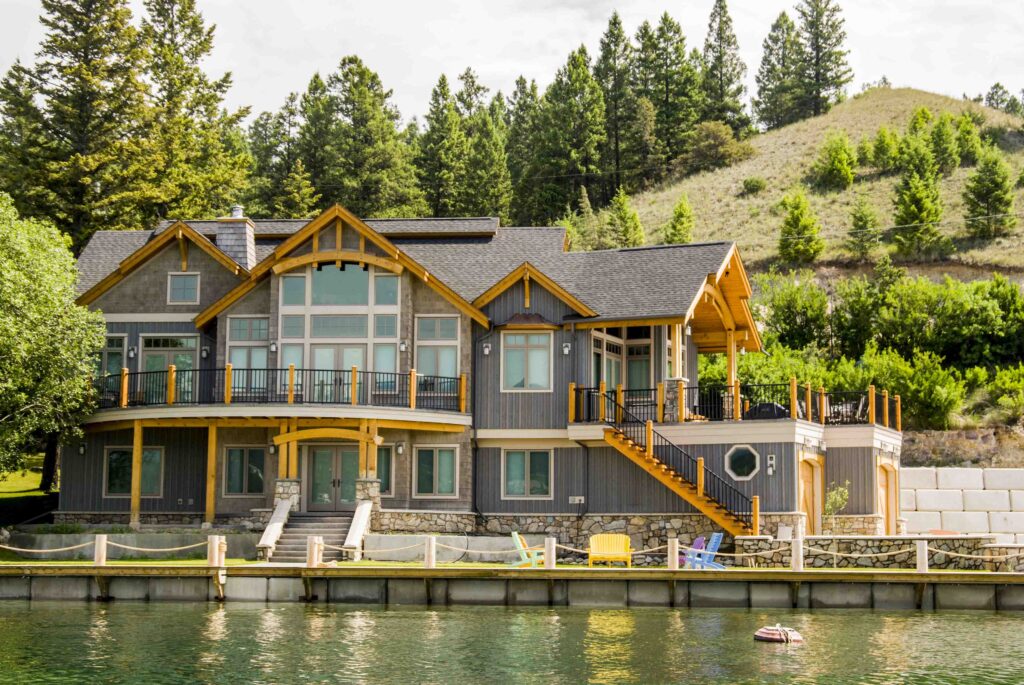
Another issue on the lake is the quick ownership turnover for some of the homes – often with no handover of septic system information. There’s always supposed to be a map of where it is located. But now people don’t know where their septic systems are, so they are careless – until it stops perking. Then they have a flood in their house, and that’s bad.
As well, today’s lakeside cabins for rent or purchase take 50 million gallons out of the lake.
NWNL How would you describe challenges to this main stem of the transboundary Columbia River Basin here in British Columbia before it flows to the US states of Washington and Oregon?
BERGENSKE The Columbia River Basin is a continentally significant, trans-boundary ecosystem in Canada’s southeast corner. It also has the densest population of inland grizzly bears we know of. That is a major issue. Wildlife in the Purcell Mountains in the East Kootenays is critical, given that we are at a crossroads north and south in terms of our species diversity. We share the southern extent of some of the more northern species, and the northern extent of the more southern species, including cats that are just on the edge.
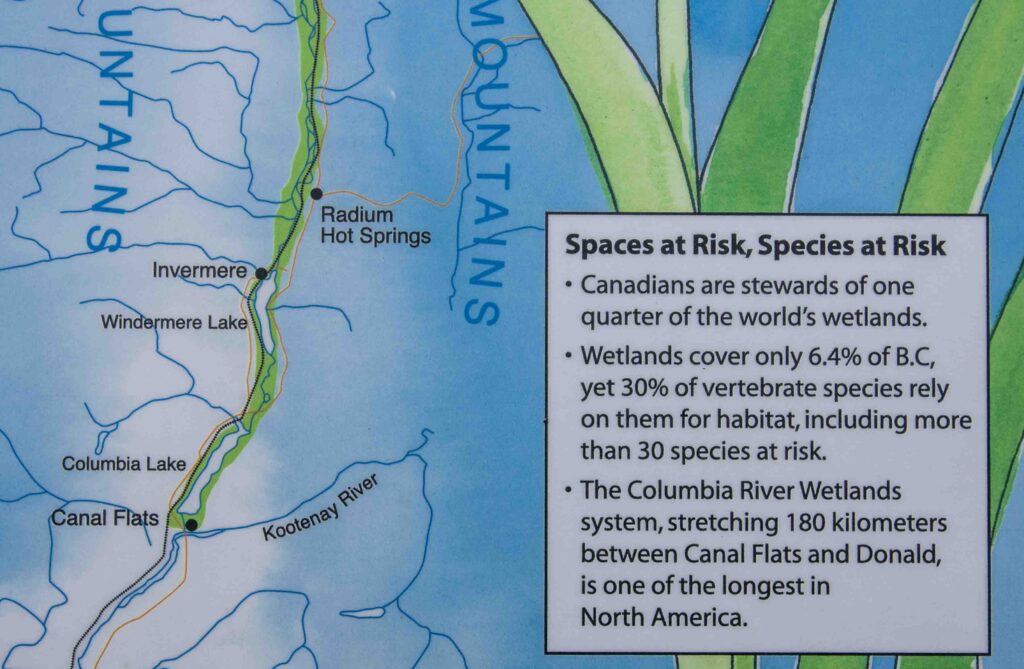
We have each of the three major cats here; and what happens here determines activity for grizzly bears. The only places bears are moving now are up and down the spine of the Purcell Mountains and the spine of our Canadian Rockies, since this is their southern extent.
Wildsight is now working on improving connectivity within the Purcell system, especially as we face the challenges of the possible Jumbo Resort development. There’s a strong proposal for this big mega-resort to be built on the north end of the Purcell Mountains Conservancy, just upstream of Toby Creek, the creek that comes out in Invermere.
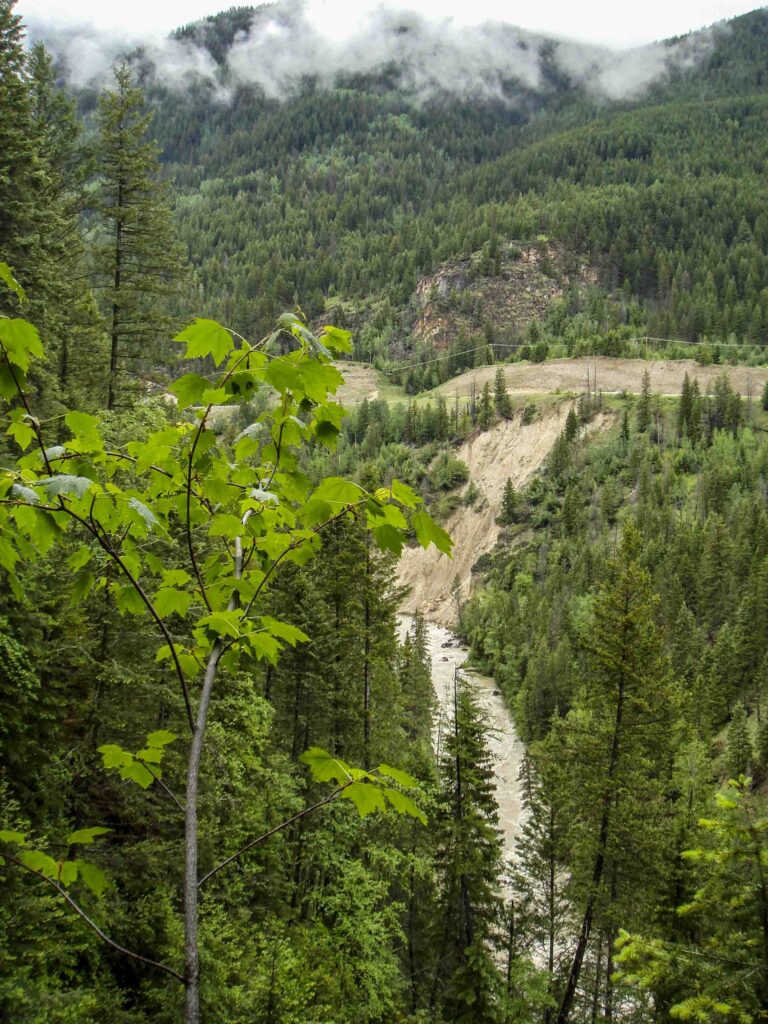
I just talked to a researcher about biologists’ projections that demonstrate how it would be a major disaster if Jumbo Resort goes forward. It would disrupt movement of bear populations and break up their genetic connectivity here over the long term and in the short term for those of the regional area.
NWNL What are the intentions and plans of Jumbo Glacier Resort?
BERGENSKE Here we have very strong public opinions against Jumbo Glacier Resort developing in this region. But decisions are made in Victoria where the developers have very, very good connections. I’m frustrated with this campaign. It should have been an easy because the regional public is so clearly against it. But we haven’t been able to inform those far-away decision-makers, so that they can make good decisions. Our work is to bring forward research, from five years of field research on mountain caribou and several years of research on grizzly bear populations and their density.
NWNL What will you do with that research? Can you put it into a format that is digestible by the public, so that good social decisions are made?
BERGENSKE At the present time, the major issues we’re dealing with are those around water. East Columbia Lake where we’re sitting is in a provincial park, but right next to a piece of private land. Immediately beyond that is a Wildlife Management Area we secured in the mid-90’s through land-use designations. It’s a project on which we worked very, very hard. The last day I was on the phone with regional managers saying “We can’t do this now.” And we were on the phone with Victoria’s Minister of Environment. He signed the paper on the way out the door on the last day before the election that his government could make a decision. They were re-elected, but nobody knew that would be so at the time.
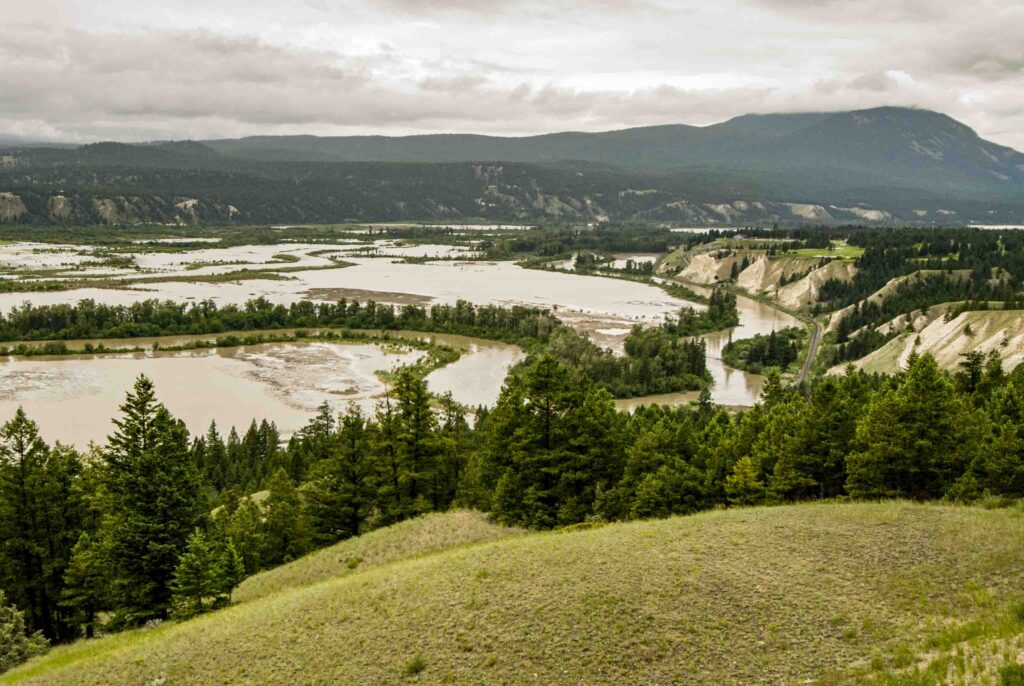
This Wildlife Management Area – a designation that means that wildlife management comes first – was designated as contiguous with the Wildlife Management Area for the Columbia River Wetlands. While some things can be done there, it gives the top priority to wildlife. For the wetlands in this area, it has been very useful.
But with this particular piece of private land, there is a proposal by Fairmont Hot Springs Resort to develop several hundred new sites for homes, condominiums, another golf course and so on and so forth. That would happen on this side of the lake – which is a big-horn sheep winter habitat.
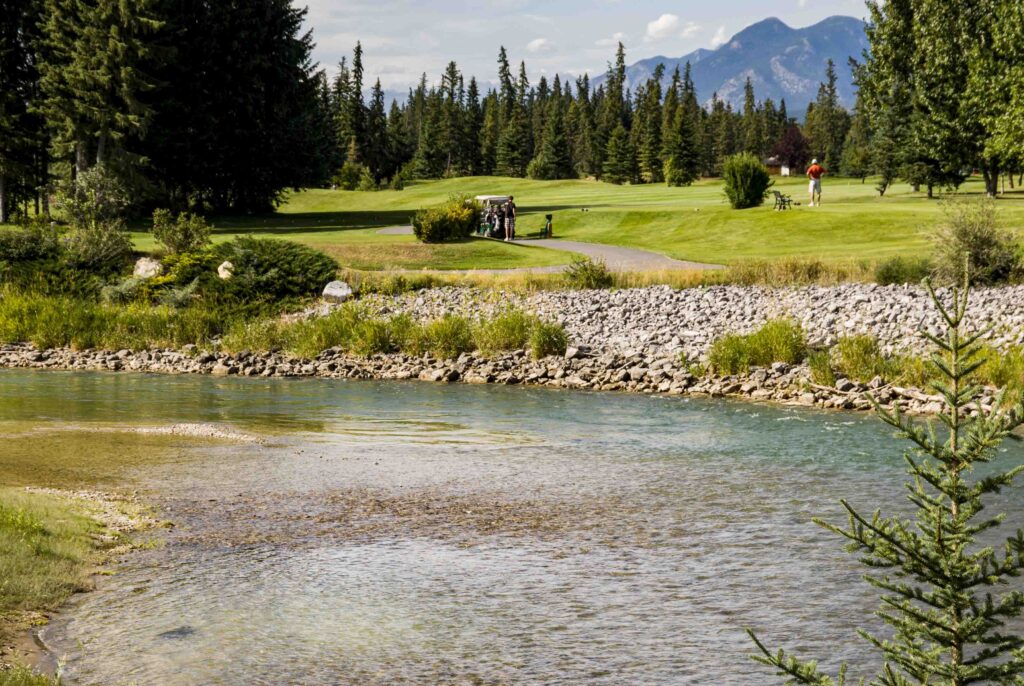
EAST KOOTENAY STEWARDSHIP
We’ve tried to keep this east side of the lake in its natural state as much as possible and maintain all its values for the last year and a half. We’ve had very strong public support. But it’s private land. The Fairmont Hot Springs Resort was sold and its new owner is now negotiating with land trusts. We’re keeping the public informed and involved in our work and supporting the land trusts in negotiating some trades.
The local K’tunaxa First Nation are key to what’s happening here, because this is the most sacred place in their territory and the place of their creation myth. They are very, very concerned about how this area is managed. They want to keep its natural and wildlife values. Their work on this has been key to what’s happening. Wildsight has an ongoing relationship with the K’tunaxa on several issues and share issues of common ground with their natural-resources committee.
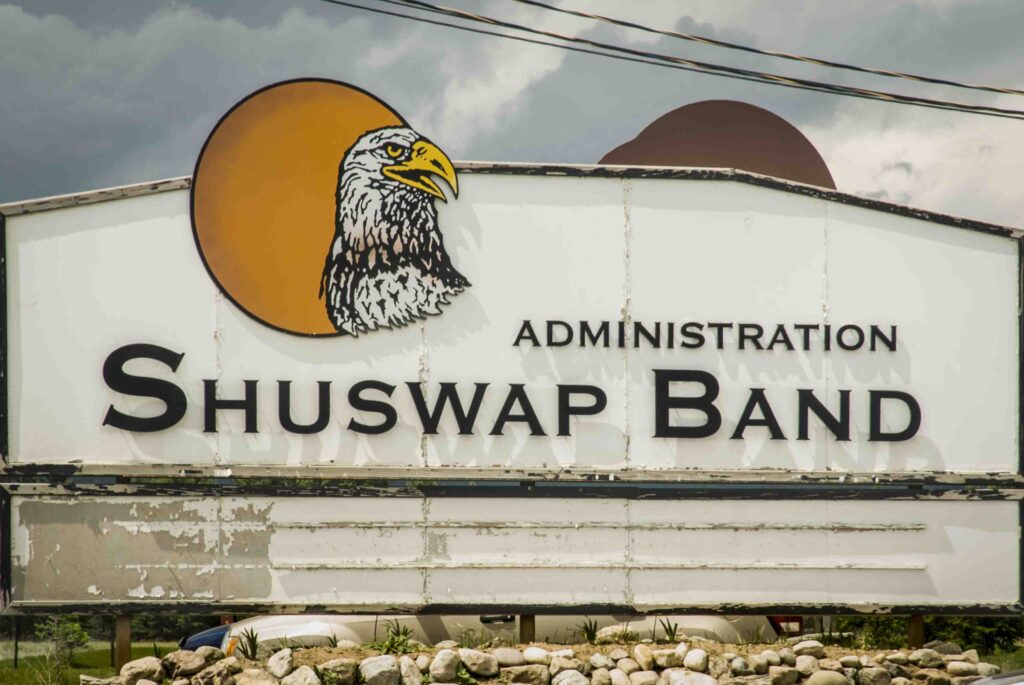
NWNL Is there a strong community among the K’tunaxa?
BERGENSKE They have committees with representation that vary from band to band. There’s the Columbia Lake Band, just south of here. Locally, they are the most involved and are very active on issues.
NWNL How do you assess the strength of Wildsight’s ability to face major issues?
BERGENSKE Wildsight has over 1,000 members focused on issues facing us. For instance, the giant issue that just hit 2 weeks ago is that British Petroleum has hundreds of millions of dollars to spend on developing coalbed methane [i.e. extracting methane absorbed into solid coal] in the Elk and Flathead Valleys. We’ve just finished dealing with other operators on coalbed methane – and now BP has come in in a very, very big way. Tomorrow’s job is to start working on that with them.
TOURISM IMPACTS
Tourism development is another giant issue here. Like forest companies 20 years ago, tourism and mining companies still don’t “get” what must be respected. Inappropriate tourism use can inundate the land. Even with nice little country homes, we lose key pieces of the landscape that are crucial to making the whole system work. We need to make sure development is appropriately placed and respects all values – including water values! With mining, we’re a century behind in terms of the legislation. Now they have a very, very free hand and say, “Oh no it’s not the way it used to be.” But I hear the forest industry say that year after year. We’re still consistently losing essential environmental values and sadly lack enough awareness of what tourism development means – and especially mining.
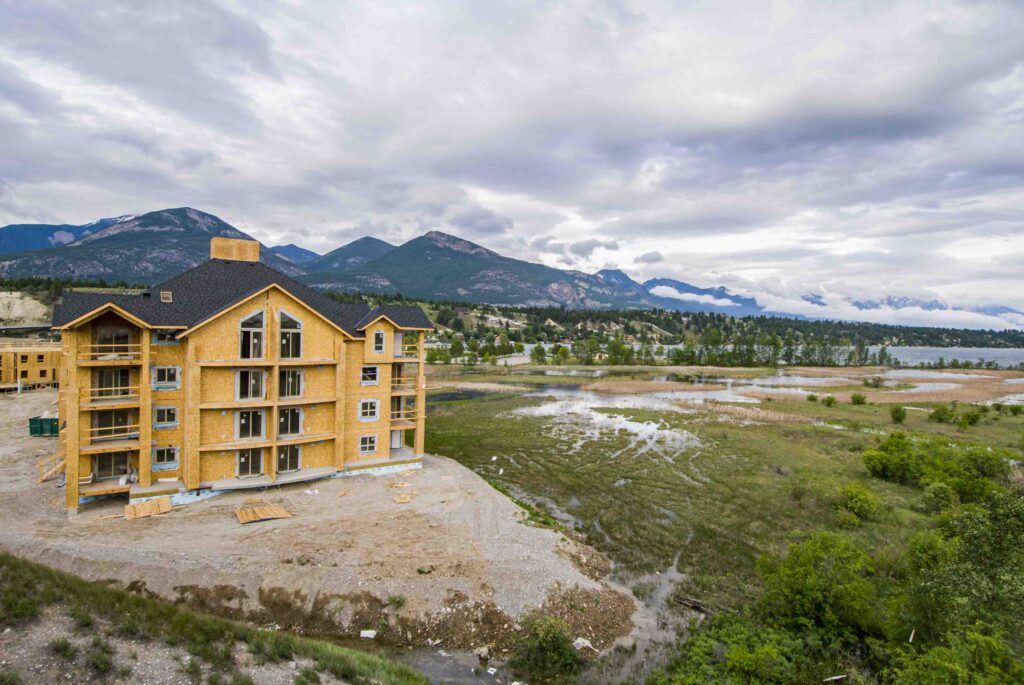
NWNL What do you see as solutions?
BERGENSKE We need more enlightened players to raise standards so we become more concerned and conscientious about consequences. The forest industry only came around to such awareness after we had major market campaigns. Our effect in the marketplace has changed a lot of habits. Things are still far from where they need to be, but we’re certainly making strides. People recognize that they are being watched and that they have a social responsibility to the planet and our community.
NWNL Two questions…. For you, does tourism include people who come here to go boating and spend a vacation with their family with those who come to buy a second home?
BERGENSKE Yes, it’s all the same. Those second homeowners come under the category of tourism, as people using our infrastructure. And now our tourism is impacted by being so close to the Alberta oil boom situation in northern B.C. providing new money. The changes in the last decade just make people’s heads spin.
Our Wildsight focus is on the environment and about how our community functions. Humans generally have exploited natural resources in order to survive. But at the same time, people in the forest industry – and others who get to know and respect the land – pretty soon end up being some of our best allies. It’s a matter of educating new people who are willing to recognize conscious choices they need to make to save what they think is so great here.
US v CANADIAN ENVIRONMENTAL LAWS
NWNL Regarding mining techniques, let’s discuss Teck Cominco. It is Canada’s largest diversified mining company, and is located right on the Columbia River border between the US and Canada.
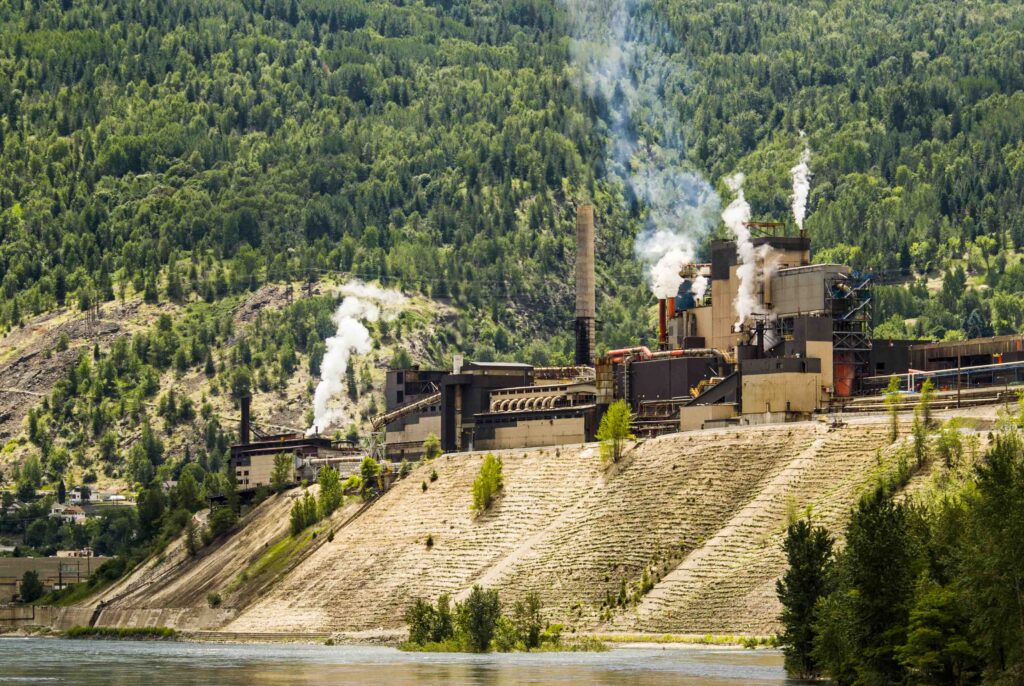
Its production of zinc, coal, copper and other metals and minerals in Trail, BC, has polluted the Columbia River Basin for years, particularly downstream in Washington State. I hear that Teck Cominco’s operations are now much cleaner than when they dumped everything straight into the river.
BERGENSKE Yeah, you’ll hear a lot about their pollution as you go downstream from here; but there’s no question that situation is better now than 20 or 25 years ago. The river there still has major problems from historic effluent flows. So, yes, the international issue with Teck Cominco is a giant issue.
Personally, although Canadian, I am not sympathetic to Teck. I think the Columbia is one river. It’s unfortunate that Teck has successfully used it as a Canada versus U.S. issue. They tried to frame it that way; but I think that it’s inappropriate because it should be about people dealing with a shared environment. It was politically very smart, but unfortunately for Teck, the US has a great ability to enforce legislation.
Canada’s environmental legislation is nowhere near as strong as that of the U.S. Just look at your Endangered Species Act! Canada’s environmental community would love to have policies as difficult as you have in the States. You have something to legislate on. We don’t have that type of framework on many of these issues; so with our legislative frameworks, it’s a struggle dealing against industry.
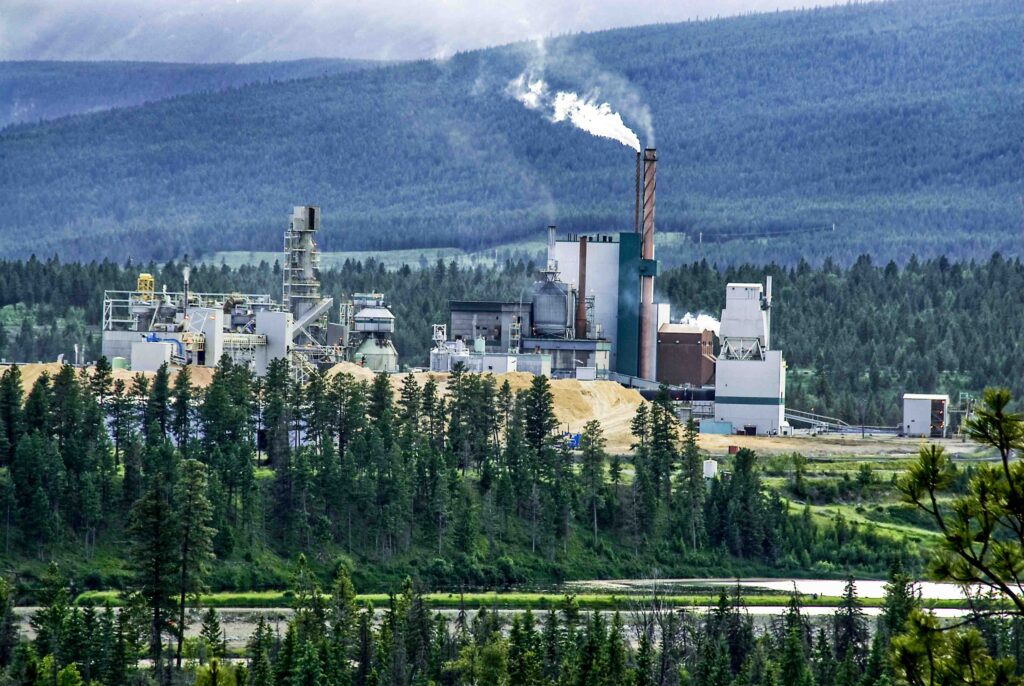
When we were dealing with Tembec Pulp Mill at Canal Flats, they’d been over the legal limits for years. We finally started publishing every week graph data we’d get from the mill in the newspaper. It drove them crazy. They’d say, “Oh, but we have a legal variance.” We’d say, “If you have enough political influence, you can have variance from the government every week, and we’ll not go after you. But the fact is you are polluting – and you are polluting at a standard that doesn’t even meet a relatively lax standard.” Unfortunately, this is not unusual.
Much of our legislation sounds good on paper; but we only have the ability to suggest mitigation. Lacking many lines in the sand means we need an informed public to inform people in the government to make the system work. The laws won’t do it by themselves. We have some excellent people with whom we work from West Coast Environmental Law and Sierra Legal Defense Fund. But they have to argue things on a very broad principle. They don’t have the hard lines the US does with Teck legislation.
CLIMATE CHANGE IMPACTS
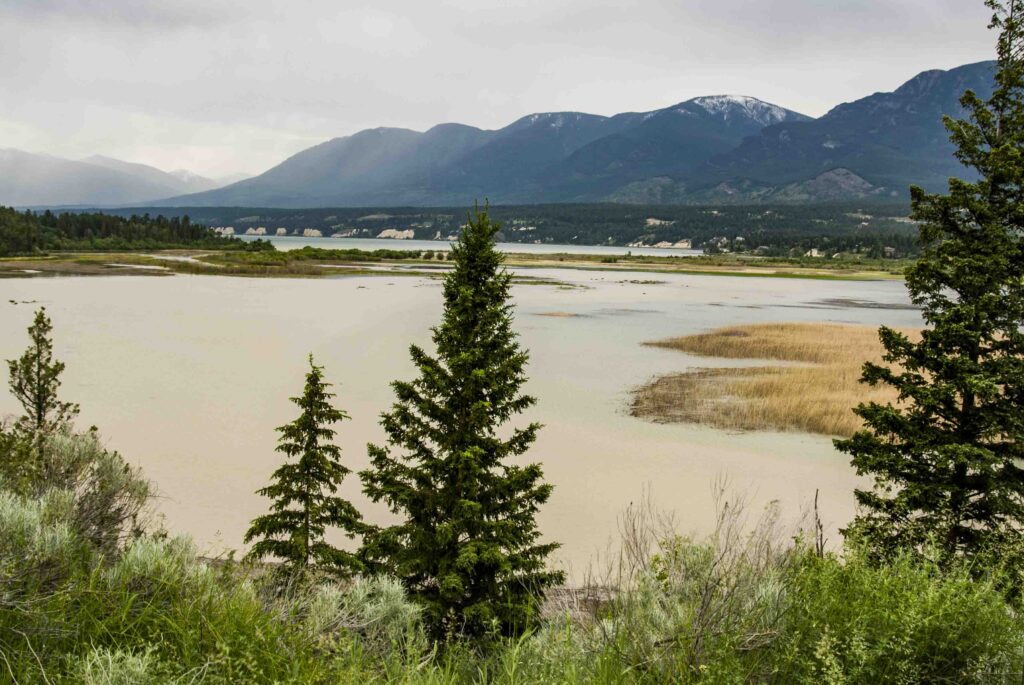
NWNL We much appreciate the thoughts you’ve shared as we overlook the source of the Columbia River. Hopefully all interviews of our 6-trip expedition will be as scenically lovely and rewarding as this chat we’ve had with you! Our upcoming conversations should be very interesting , especially as we discuss freshwater impacts due to climate change. Your thoughts?
BERGENSKE Yes, here it’s noticeable how the seasons are changing. How much warmer the winter is! But hey man, nobody is missing -30 degrees. We like it at -15 with great snow! We have just had an incredible winter, as far as snow and temperatures this year. That’s why we have such good snow still up high.
But it’s definitely a different world – and it’s not just for one year. Pattern changes are there even in our short lifetime. It was usually -30 for several weeks in the beginning of January and so on; but we hardly even put on felt pack-boots in winter anymore.
NWNL Yes. We’ve experienced that in US cross-country ski areas in recent winters.
BERGENSKE I remember being in 50 K cross-country races up in Radium, an area kind of like this – but there’s no way now. We haven’t been able to cross country ski there for years.

NWNL John, what places along the Columbia should we document – and besides climate change, which issues should we chase?
BERGENSKE Regarding the Columbia, it’s the wetlands that are just totally amazing! They are important as a flyway and as the headwaters of this Columbia River system. The fact that we have preserved this 180-km. wetland system is a unique achievement – thanks to Ellen Zimmerman’s leadership! I hope you meet her and take time to dive in and off of some of the little roads that come out of Spillimacheen, Brisco and other little towns further north.
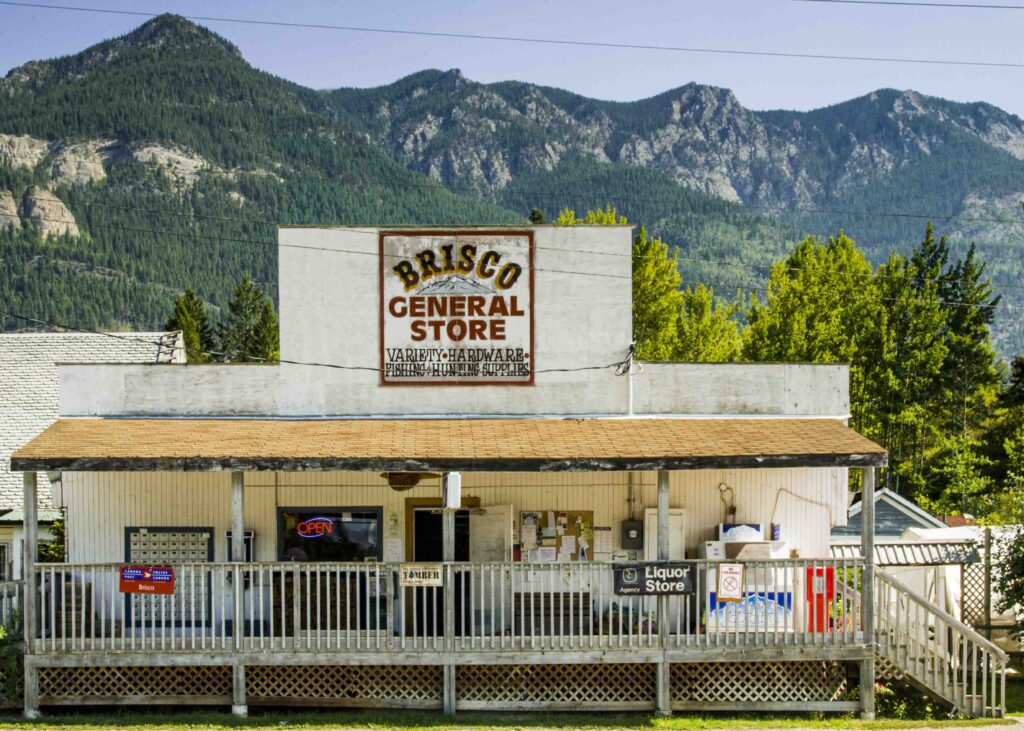
You can drive across the Columbia Wetlands and go up on their west side. And remember that connected ecosystems concept of Y2Y (Yellowstone to Yukon) also applies to our Purcell Trench (aka Kootenay River Valley) running north-to-south between the Purcell Mountains on the East and the Selkirks and Rockies on the west. It is a similar-functioning series of ecosystems.
NWNL John, we could chat for hours, but the storm clouds are closing in on us, so let’s leave while our good-weather karma lasts – and before we are drenched! Thank you for your thoughts and your help directing our plans for this first NWNL expedition.
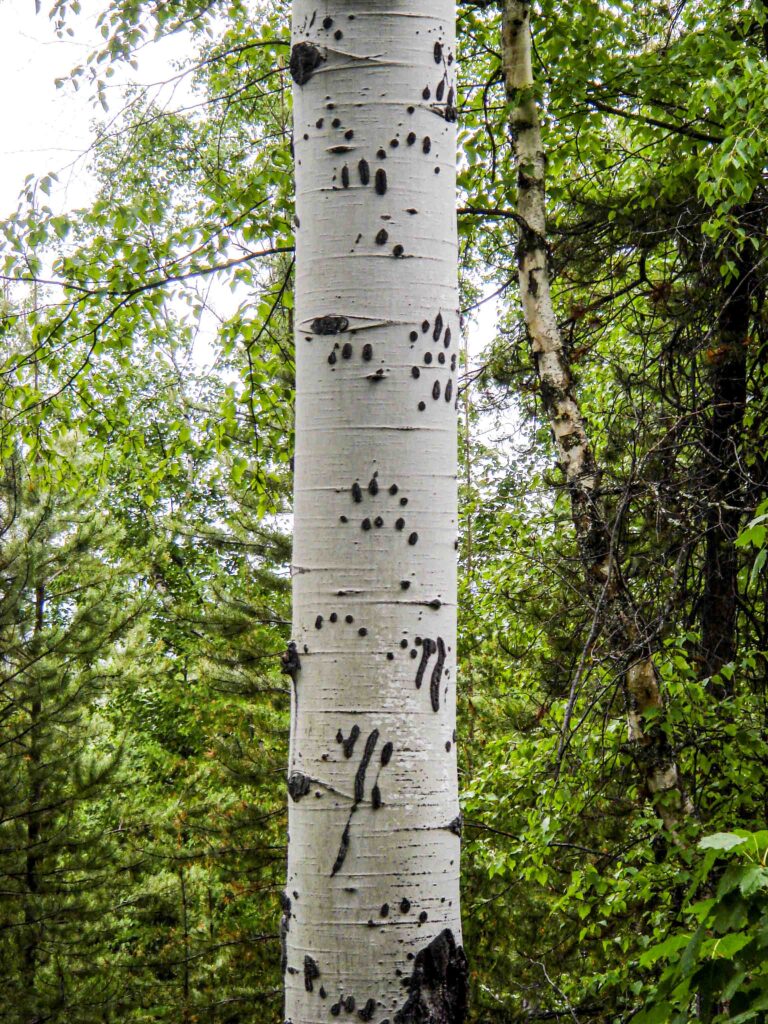
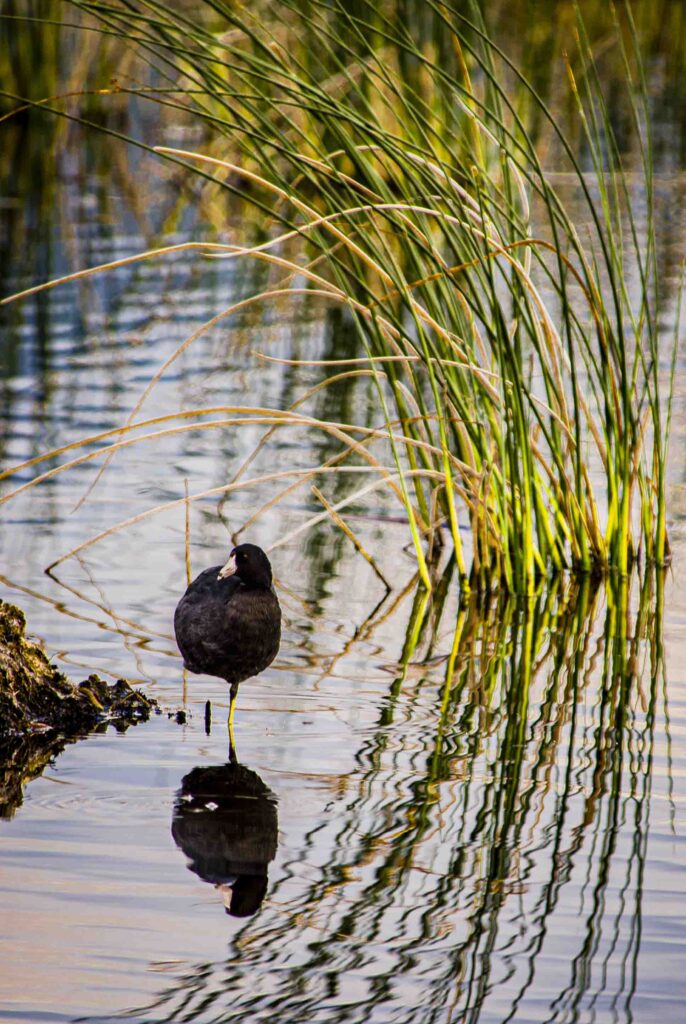
NWNL wishes these immature wild animals, whose paths we crossed in Canada’s Columbia River Basin, a clean and healthy environment in which to thrive!
Posted by NWNL on November 14, 2023.
Transcription edited and condensed for clarity by Alison M. Jones.
All images © Alison M. Jones, unless otherwise noted. All rights reserved.
